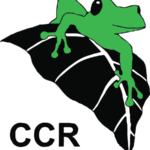Kalaripayattu?is an ancient martial art indigenous to Kerala, and is considered by some to be the mother of all martial arts. Historians believe the techniques originated in ancient South India between 200 BCE and 600 CE, and cresting in popularity between the 14th and 16th centuries.
The martial art was suppressed by British colonialists and was in danger of being forgotten. It is now making a strong comeback, attracting the younger generation and appearing in popular culture, dance forms, theatre, in fitness gyms and in movies too.
The art draws inspiration from the raw power and sinuous strength of the majestic animal forms – Lion, Tiger, Elephant, Wild Boar, Snake, and Crocodile. Kalaripayattu laid down the combat code of the Cholas, the Cheras and the Pandyas, dynasties that ruled South India’s golden era. Shrouded in mystery and secrecy, Kalaripayattu was taught by masters who supervised the activities of a hundred and eight ‘kalaris’ or training centres/arenas masters in total isolation, away from prying eyes.
Oral history records the awe with which chroniclers and poets of yore recorded the complexity of the techniques, the liquid beauty of the moves, and the enviable elasticity of the practitioners of Kalaripayattu.
Fun Fact: If you think some Kalaripayattu moves resemble those of Po, the adorable star of Kung Fu Panda, you’d be absolutely right. The Chinese martial art of Kung-Fu, popularized by the monks of the Shoaling Temple traces its ancestry to one Bodhi Dharma – an Indian Buddhist monk who was a Kalaripayattu master.




